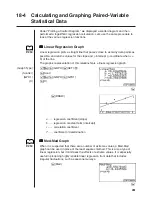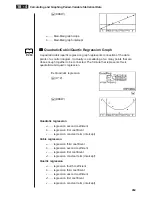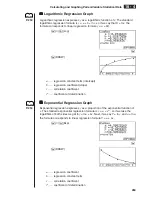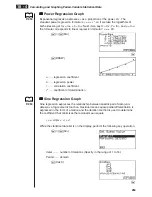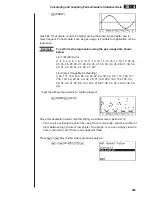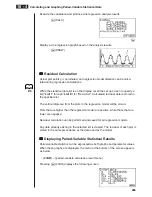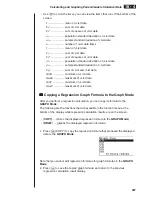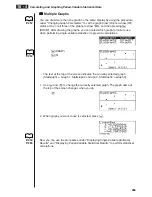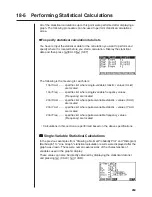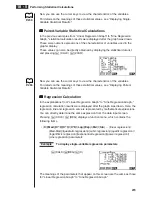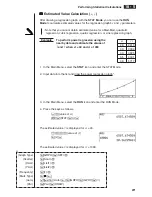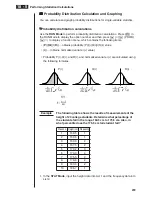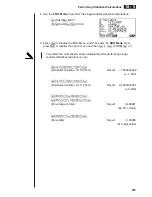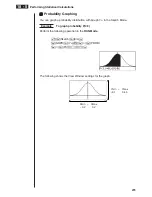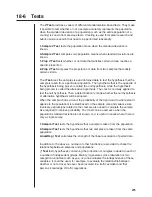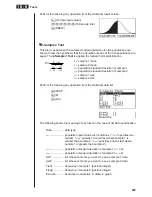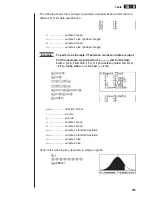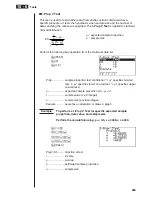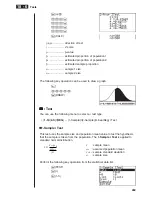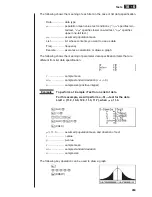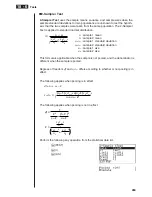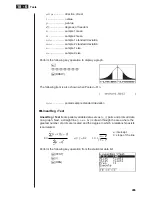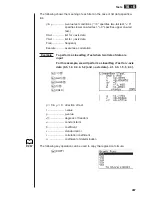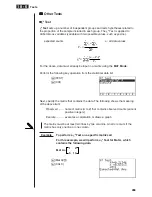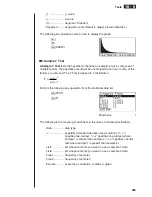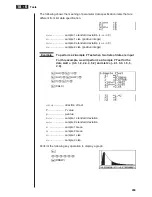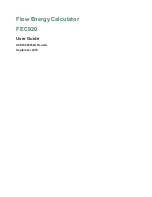
275
18-6
Tests
The
Z
Test
provides a variety of different standardization-based tests. They make
it possible to test whether or not a sample accurately represents the population
when the standard deviation of a population (such as the entire population of a
country) is known from previous tests.
Z
testing is used for market research and
public opinion research that need to be performed repeatedly.
1-Sample
Z
Test
tests the population mean when the standard deviation is
known.
2-Sample
Z
Test
compares two population means when standard deviations are
known.
1-Prop
Z
Test
tests whether or not data that satisfies certain criteria reaches a
specific proportion.
2-Prop
Z
Test
compares the proportions of data from two samples that satisfy
certain criteria.
The
t
Test
uses the sample size and obtained data to test the hypothesis that the
sample is taken from a particular population. The hypothesis that is the opposite of
the hypothesis being proven is called the
null hypothesis
, while the hypothesis
being proved is called the
alternative hypothesis
. The
t
-test is normally applied to
test the null hypothesis. Then a determination is made whether the null hypothesis
or alternative hypothesis will be adopted.
When the sample shows a trend, the probability of the trend (and to what extent it
applies to the population) is tested based on the sample size and variance size.
Inversely, expressions related to the
t
test are also used to calculate the sample
size required to improve probability. The
t
test can be used even when the
population standard deviation is not known, so it is useful in cases where there is
only a single survey.
1-Sample
t
Test
tests the hypothesis that a sample is taken from the population.
2-Sample
t
Test
tests the hypothesis that two samples are taken from the same
population.
LinearReg
t
Test
calculates the strength of the linear association of paired data.
In addition to the above, a number of other functions are provided to check the
relationship between samples and populations.
!
2
Test
tests hypotheses concerning the proportion of samples included in each of
a number of independent groups. Mainly, it generates cross-tabulation of two
categorical variables (such as yes, no) and evaluates the independence of these
variables. It could be used, for example, to evaluate the relationship between
whether or not a driver has ever been involved in a traffic accident and that
person’s knowledge of traffic regulations.
Summary of Contents for CFX-9970G
Page 22: ... CFX 9970G ...
Page 452: ...435 1 2 3 4 5 Program for Circle and Tangents No 4 Step Key Operation Display ...
Page 453: ...436 Program for Circle and Tangents No 4 Step Key Operation Display 6 7 8 9 10 ...
Page 454: ...437 11 12 13 14 15 Program for Circle and Tangents No 4 Step Key Operation Display ...
Page 455: ...438 16 17 18 Program for Circle and Tangents No 4 Step Key Operation Display ...
Page 458: ...441 1 2 3 4 5 Program for Rotating a Figure No 5 Step Key Operation Display ...

